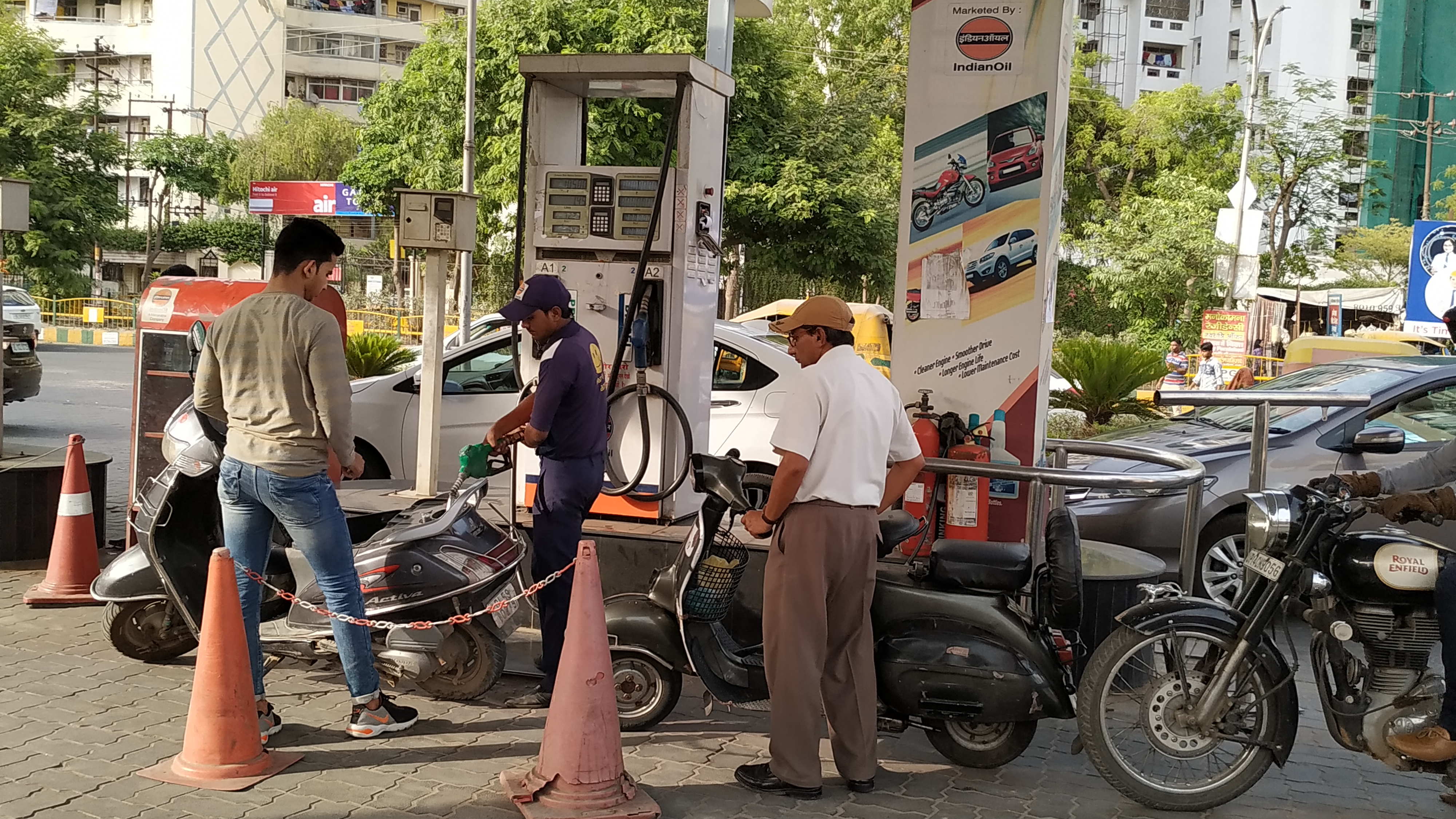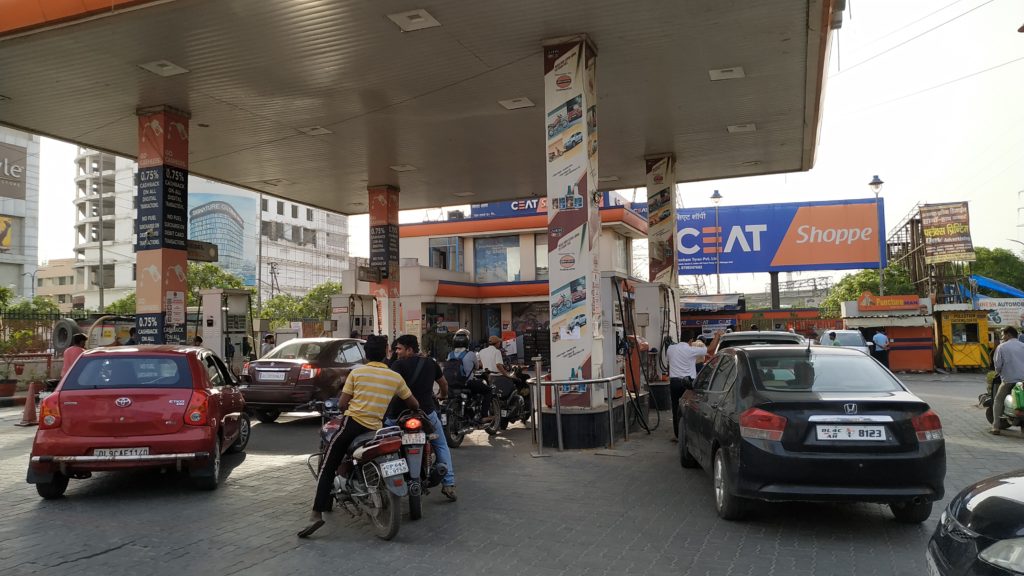India is the third biggest importer of crude oil in the world.

India is an oil-import dependent nation. Over 90 percent of the oil requirement is met via import. India is the third biggest importer of crude oil in the world. Despite these factors, India is not feared to undergo oil convulsion with USA withdrawing waiver from the sanction on Iran oil from May.
Accepting concerns by vehicle users, the analysts and politicians preferred to remain mute on any major impact on Indian economy, even though the waiver was made amidst the general election. With the end of waiver, crude oil prices will soar in world market. This is because Iran is fourth largest producer of crude oil in the world. Furthermore, global oil consumption exceeds global production.
Given these situations, sanction on Iran oil will certainly impact India’s basket prices of imported crude. This will have a cascading impact on petrol and diesel prices. Eventually, a general fear looms large that the hikes in oil prices will fuel inflation in the country.

However, there is another school of thought, which argued that the concern would be minimized owing to technological innovations and structural changes of oil use. It believes that India is insulated from any major impact of the sanction; despite it is an oil import dependent nation.
Basically, there are four reasons, according to this line of thought, which will help India insulate itself from the adverse impact of global oil price hike. First, the parallel relation between oil price hike and inflation has tapered. Secondly, oil is not the main source of energy for manufacturing. Third, a big burden of crude oil import is counterbalanced by export of petroleum refinery products. Lastly, share of Iranian oil in India’s total imports of oil is not substantial.
Conventional wisdom says that there is a close relation between oil price and inflation. Whenever there was a global oil price hike, which was reflected in the high petrol and diesel prices in India, inflation surged. Nevertheless, the parallel relation between oil price and inflation witnessed a turnaround, since 2016-17. Oil price hike failed to fuel the inflation.
For example, the average Indian basket price for imported crude oil increased from US$ 46.2 bbl in 2015-16 to US $ 47.6 bbl in 2016-17. But, in contravention to conventional wisdom, inflation, measured by CPI, declined. It fell from 4.9 per cent in 205-16 to 4.3 percent in 2016-17. Since then, an opposite relation between oil price hike and inflation sustained. In 2017-18, basket price of imported oil rose to US $56.4 bbl, but inflation slipped to 3.6 per cent. These suggest that the threat of global oil price hike and its impact on inflation does not hold good now.
Why has the parallel relationship between oil price hike and inflation been jeopardized since 2016-17? The main reason is that oil energy is mainly used as transport fuel in the country and not for production. Nearly 55 per cent of oil energy is used as transport fuel in the country. High cost of transport fuel impacted the prices of mainly food and vegetables. Due to lack of adequate cold storage facilities, motor transport, viz. trucks and Lorries, are the major carriers for food and vegetables, which bring these items to the cities from nearby villages in the country. The food component constitutes a bulk share in the retail price index.
With leapfrog in agricultural production, inflation owing to food component in the price index has swayed. This has overshadowed the impact of oil price hike, which was reflected in the transport fuel.
In manufacturing, anecdotal evidence shows that oil price hike will have simmering impact. This is because oil is not the major source of energy for manufacturing in India, unlike other countries. Coal is the major energy source, such as power, for manufacturing and other industrial sectors. Oil produces less than one percent of power generation in the country. Other oil-based products, such as fuel oil and light diesel oil, which are used as energy sources for manufacturing, are insignificant energy sources for manufacturing.
Unlike in 1990’s, crude oil imports ceased to be a big burden for India’s trade deficit. With the advent of export of petroleum refinery products in the early of 2000’s , owing to large number of refinery plant establishment in the country, petroleum products have become the predominant component of export basket of the country. Alongside, it became a major tool to counterbalance the big burden of crude oil. Currently, exports of petroleum refinery products account for one-sixth of India total exports. And, in terms of counterbalance, which help in reducing trade deficit, exports of petroleum refinery products offset one-third of crude oil imports. For example, in 2018-19 export of petroleum products was US $ 46.4 billion against import of US $ 141.1 billion import of crude oil and petroleum products. This offset 32 percent of import burden of crude oil and other petroleum products.
Incidentally, Iran is not the major supplier of crude oil to India. In 2018-19, India imported crude oil from Iran amounting to 24 million tonne. This accounted for a little more than 10 percent of India’s total import of crude oil. Saudi Arabia and Iraq are the major suppliers of crude oil to India. Saudi Arabia ensured to increase supply by making India a regional hub for supply of crude oil.
Another factor, which goes in favour of India with regard to its oil dependency and curtailment of Iranian oil, is the near stagnancy in oil demand in the country. With various counter-measures for oil saving and boost to non-conventional energies, such as solar, bio and wind energies, India’s total demand for crude oil increased marginally. Oil demand increased by 3-4 per cent during the past two years, despite the country achieved highest GDP growth hovering around 7 per cent.This suggests that oil volatility due to price fluctuations is less vibrant to the major economic parameters for the country. Oil is not the major source of power energy and not the catalyst for manufacturing in the country.



Everyone loves what you guys tend to be up too.
This sort of clever work and coverage! Keep up
the wonderful works guys I’ve you guys to my blogroll. http://ironthundersaloon.com/
Thank you.
We sincerely wish you will keep visiting our site and stay engaged.
Regards.
Team KRC Times.